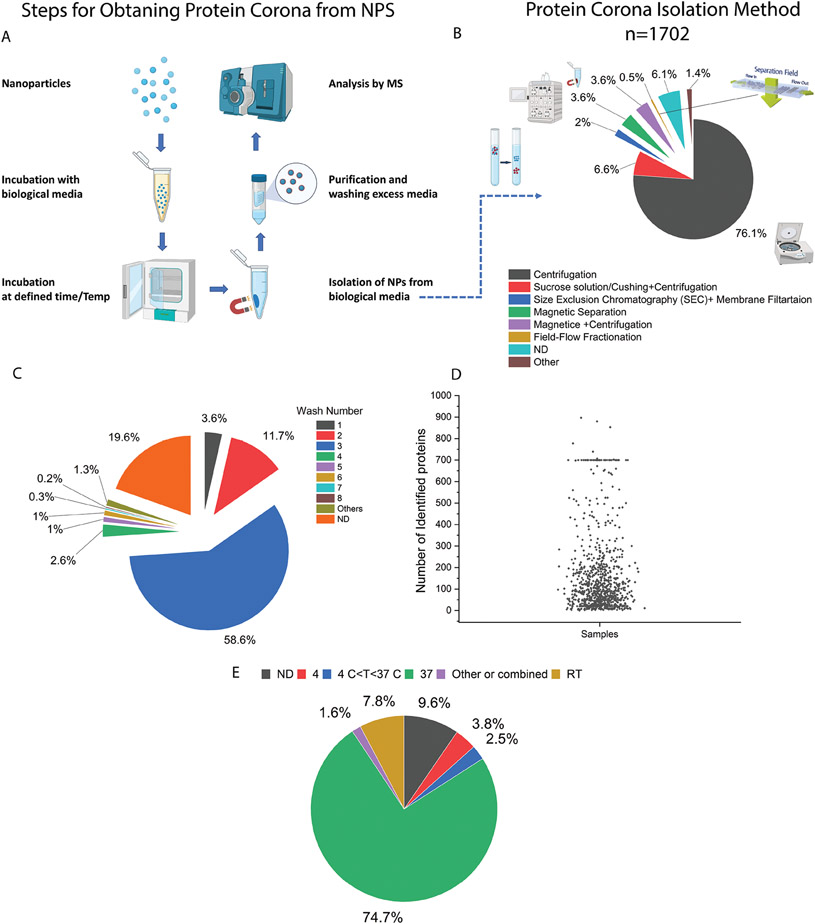Figure 6.
A) Summary of a general experimental workflow for obtaining/collecting the protein corona from NPs. 1) Incubation of NPs with biological media for a pre-defined amount of time and temperature, 2) isolation of coronated nanoparticles, 3) purification to remove excess media and unadsorbed proteins, and 4) characterization of protein corona by an analytical method such as LC-MS. B) Analytical methods used for obtaining biomolecular corona from NPs (N = 470 manuscripts). The methods are classified into six major methods consisting of centrifugation-based, gradient centrifugation, size exclusion chromatography, magnetic separation, combined methods (magnetic and centrifugation), and field flow fractionation. Simple centrifugation is the prevalent analytical method used for protein corona analysis. After centrifugation, gradient centrifugation followed by magnetic separation is also other common method for the isolation of NPs from biological media. C) The wash number used in the studies with the majority of nanoparticles being washed three times. A non-negligible proportion of studies did not report wash number (19.6%) or reported fewer than three washes (3.6 and 11.7 % for 1 and 2 washes, respectively). D) The number of proteins identified in the protein corona, including 938 nanoparticles in this analysis. For those nanoparticles which have several values reported in Table S1, Supporting Information, the largest number has been selected and included in the graph. E) Reported temperature for protein corona incubation (n = 1702 nanoparticles); ND: non-disclosed.

